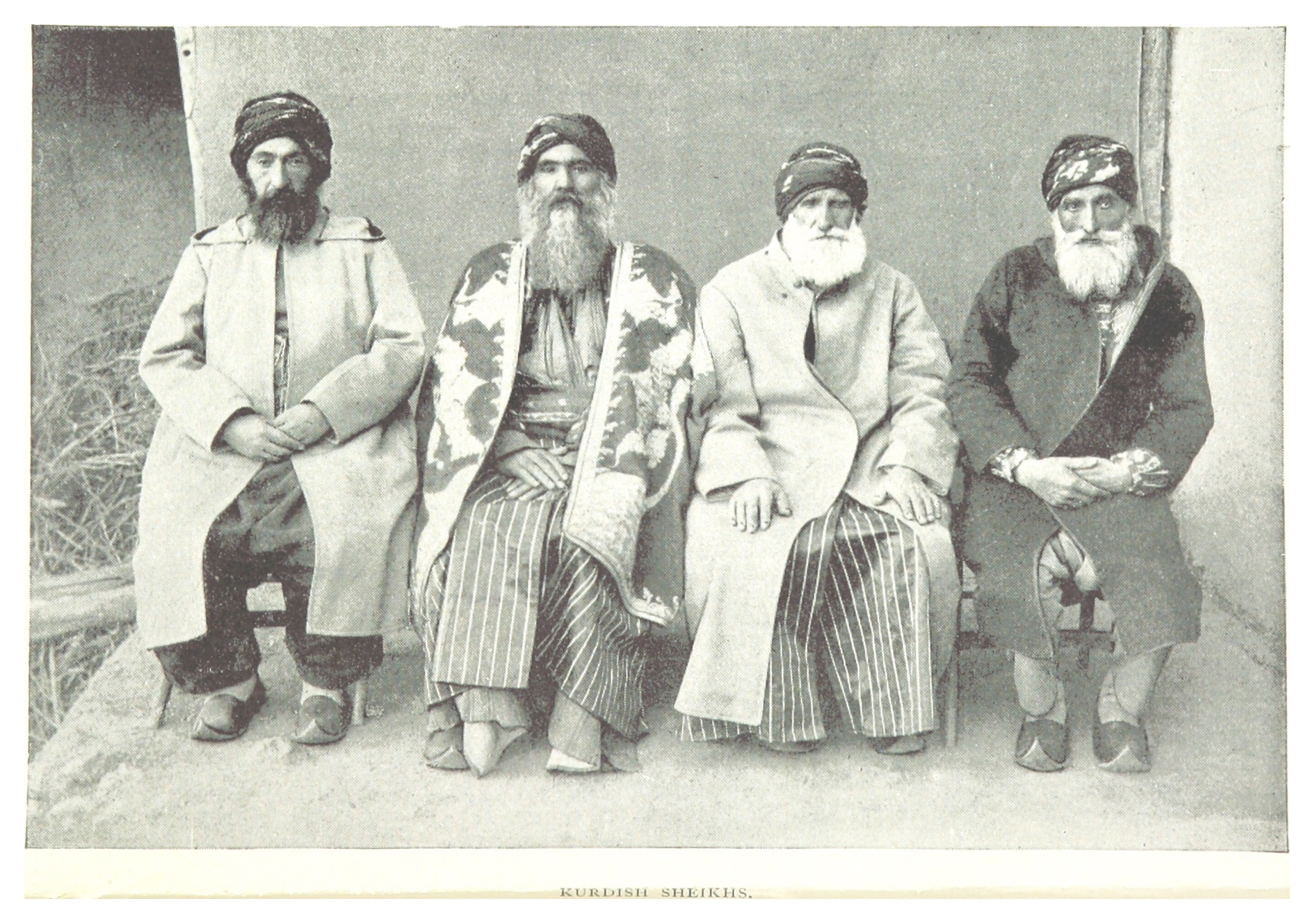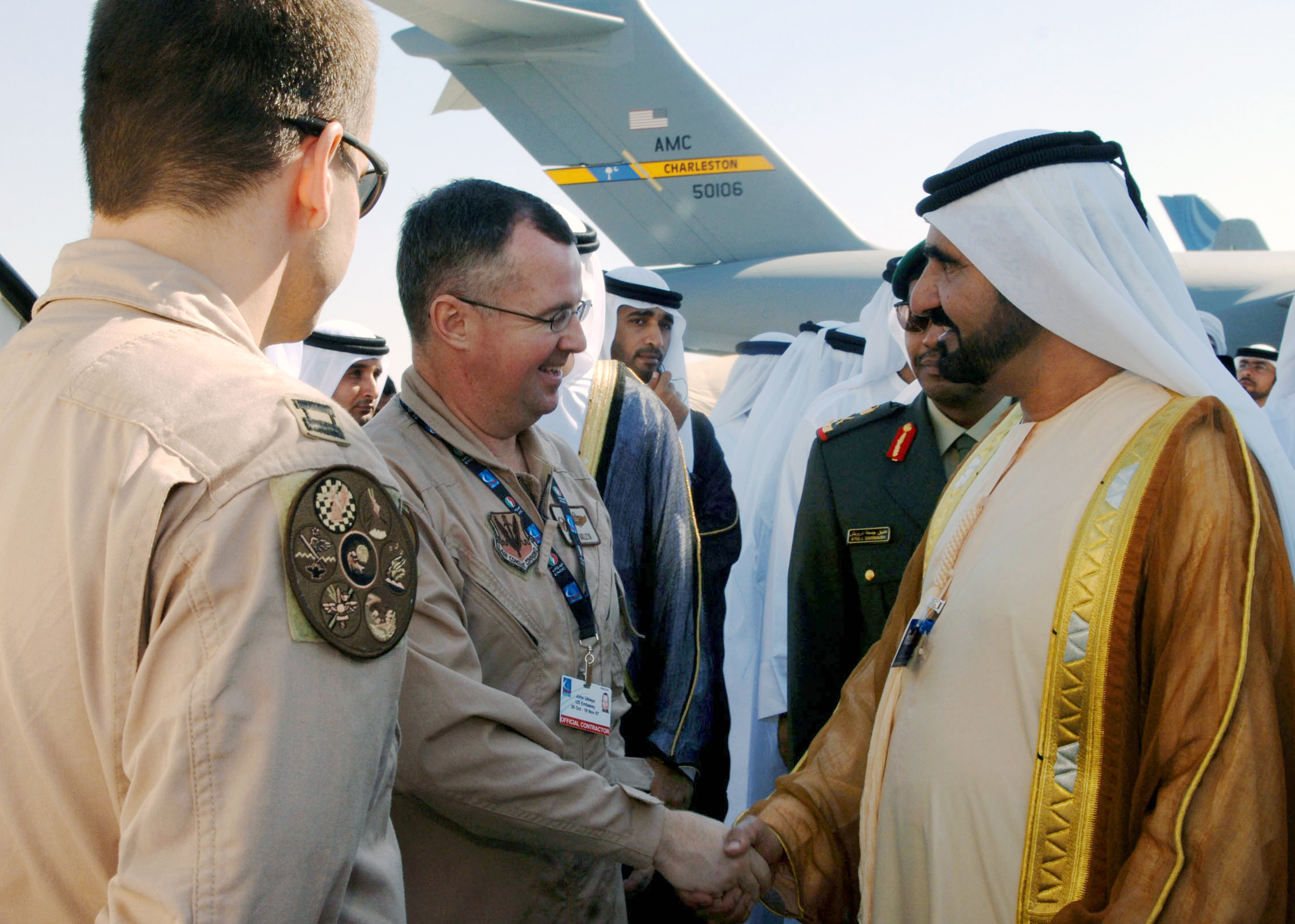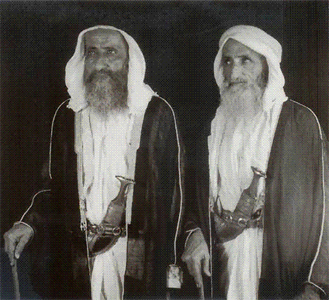|
Hamdan Bin Zayed Bin Khalifa Al Nahyan
Sheikh Hamdan bin Zayed bin Khalifa Al Nahyan was the Ruler of Abu Dhabi, one of the Trucial States which today form the United Arab Emirates (UAE), from 1912–1922. Accession He was the second son of Zayed I to rule Abu Dhabi and acceded on his elder brother Tahnoun's peaceful death. Zayed's eldest son, Khalifa, did not want to rule and so Hamdan, actually Zayed's fifth son (the fourth, Saqr, was to rule following the death of Hamdan's younger brother and successor, Sultan) took up the reins. His rule was unpopular within the ruling family as he discontinued the subsidies normally paid to family members. He was also said to have disrupted Abu Dhabi's trade relations. While Abu Dhabi's population was violently anti-Wahhabi (a number of incursions into Buraimi had helped to seal Wahhabi unpopularity), Hamdan sent a mission to Ibn Saud in Riyadh. Hamdan oversaw the continuation of the breakdown of authority which had followed his powerful father's long reign and death. In ... [...More Info...] [...Related Items...] OR: [Wikipedia] [Google] [Baidu] |
Al Nahyan
The House of Nahyan ( ar, آل نهيان, Āl Nohayān) are one of the six ruling families of the United Arab Emirates, and are based in the capital Abu Dhabi, United Arab Emirates. Al Nahyan is a branch of the House of Al Falahi (Āl Bū Falāḥ), a branch of the Bani Yas tribe, and are related to the House of Al Falasi from which the ruling family of Dubai, Al Maktoum, descends. The Bani Yas came to Abu Dhabi in the 18th century from Liwa Oasis. They have ruled Abu Dhabi since 1793, and previously ruled Liwa. Five of the rulers were overthrown and eight were killed in coups between 1793 and 1966; many were brothers. The Al Nayhan family control multiple sovereign wealth funds including the Abu Dhabi Investment Authority and Mubadala Investment Company that have an estimated $1 trillion worth of assets under management. Members Notable members of the Al Nahyan family include: Rulers of Abu Dhabi * 1761–1793: Sheikh Dhiyab bin Isa Al Nahyan * 1793–1816: Sheikh ... [...More Info...] [...Related Items...] OR: [Wikipedia] [Google] [Baidu] |
Bedouin
The Bedouin, Beduin, or Bedu (; , singular ) are nomadic Arabs, Arab tribes who have historically inhabited the desert regions in the Arabian Peninsula, North Africa, the Levant, and Mesopotamia. The Bedouin originated in the Syrian Desert and Arabian Desert but spread across the rest of the Arab world in Western Asia, West Asia and North Africa after the spread of Islam. The English word ''bedouin'' comes from the Arabic ''badawī'', which means "desert dweller", and is traditionally contrasted with ''ḥāḍir'', the term for Sedentism, sedentary people. Bedouin territory stretches from the vast deserts of North Africa to the rocky sands of the Middle East. They are traditionally divided into tribes, or clans (known in Arabic as ''ʿašāʾir''; or ''qabāʾil'' ), and historically share a common culture of herding camels and goats. The vast majority of Bedouins adhere to Islam, although there are some fewer numbers of Arab Christians, Christian Bedouins present in the Fe ... [...More Info...] [...Related Items...] OR: [Wikipedia] [Google] [Baidu] |
House Of Al Nahyan
A house is a single-unit residential building. It may range in complexity from a rudimentary hut to a complex structure of wood, masonry, concrete or other material, outfitted with plumbing, electrical, and heating, ventilation, and air conditioning systems.Schoenauer, Norbert (2000). ''6,000 Years of Housing'' (rev. ed.) (New York: W.W. Norton & Company). Houses use a range of different roofing systems to keep precipitation such as rain from getting into the dwelling space. Houses may have doors or locks to secure the dwelling space and protect its inhabitants and contents from burglars or other trespassers. Most conventional modern houses in Western cultures will contain one or more bedrooms and bathrooms, a kitchen or cooking area, and a living room. A house may have a separate dining room, or the eating area may be integrated into another room. Some large houses in North America have a recreation room. In traditional agriculture-oriented societies, domestic animals suc ... [...More Info...] [...Related Items...] OR: [Wikipedia] [Google] [Baidu] |
Sheikhs Of Abu Dhabi
Sheikh (pronounced or ; ar, شيخ ' , mostly pronounced , plural ' )—also transliterated sheekh, sheyikh, shaykh, shayk, shekh, shaik and Shaikh, shak—is an honorific title in the Arabic language. It commonly designates a chief of a tribe or a royal family member in Arabian countries, in some countries it is also given to those of great knowledge in religious affairs as a surname by a prestige religious leader from a chain of Sufi scholars. It is also commonly used to refer to a Muslim religious scholar. It is also used as an honorary title by people claiming to be descended from Hasan ibn Ali and Husayn ibn Ali both patrilineal and matrilineal who are grandsons of the Islamic prophet Muhammad. The term is literally translated to "Elder" (is also translated to "Lord/ Master" in a monarchical context). The word 'sheikh' is mentioned in the 23rd verse of Surah Al-Qasas in the Quran. Etymology and meaning The word in Arabic stems from a triliteral root connected wit ... [...More Info...] [...Related Items...] OR: [Wikipedia] [Google] [Baidu] |
Mohammed Bin Rashid Al Maktoum
Sheikh Mohammed bin Rashid Al Maktoum ( ar, محمد بن راشد آل مكتوم, links=no; ; born 15 July 1949) is the vice president, prime minister, and minister of defence of the United Arab Emirates (UAE) as well as the ruler of Dubai. He is the third son of Sheikh Rashid bin Saeed Al Maktoum, former vice president of the UAE and ruler of Dubai. Mohammed succeeded his brother Maktoum as vice president and ruler following the latter's death in 2006. A billionaire, Mohammed generates most of his income from real estate and is described as "one of the world's most prominent real estate developers". Land which is owned by him is managed as an asset of the state. There is a blurred line between the assets of the government of Dubai and those of the ruling Al Maktoum family. He oversaw the growth of Dubai into a global city, as well as the launch of a number of government-owned enterprises including Emirates Airline, DP World, and the Jumeirah Group. Some of these are held by ... [...More Info...] [...Related Items...] OR: [Wikipedia] [Google] [Baidu] |
Rashid Bin Saeed Al Maktoum
Sheikh Rashid bin Saeed Al Maktoum ( ar, ٱلـشَّـيْـخ رَاشِـد بِـن سَـعِـيْـد آل مَـكْـتُـوْم, Ash-Shaykh Rāshid bin Sa`īd Āl Maktūm; 11 June 1912 – 7 October 1990) was the vice president and second prime minister of the United Arab Emirates and ruler of Dubai. He ruled Dubai for 32 years from 1958 until his death in 1990. Development of Dubai Sheikh Rashid was responsible for the transformation of Dubai from a small cluster of settlements near the Dubai Creek to a modern port city and commercial hub. A quote commonly attributed to Sheikh Rashid reflected his concern that Dubai's oil, which was discovered in 1966 and which began production in 1969, would run out within a few generations. "My grandfather rode a camel, my father rode a camel, I drive a Mercedes, my son drives a Land Rover, his son will drive a Land Rover, but his son will ride a camel",While the following quote is commonly attributed to Sheikh Rashid ... [...More Info...] [...Related Items...] OR: [Wikipedia] [Google] [Baidu] |
Dubai
Dubai (, ; ar, دبي, translit=Dubayy, , ) is the most populous city in the United Arab Emirates (UAE) and the capital of the Emirate of Dubai, the most populated of the 7 emirates of the United Arab Emirates.The Government and Politics of the Middle East and North Africa. D Long, B Reich. p.157 Established in the 18th century as a small fishing village, the city grew rapidly in the early 21st century with a focus on tourism and luxury, having the second most five-star hotels in the world, and the tallest building in the world, the Burj Khalifa, which is tall. In the eastern Arabian Peninsula on the coast of the Persian Gulf, it is also a major global transport hub for passengers and cargo. Oil revenue helped accelerate the development of the city, which was already a major mercantile hub. A centre for regional and international trade since the early 20th century, Dubai's economy relies on revenues from trade, tourism, aviation, real estate, and financial services.< ... [...More Info...] [...Related Items...] OR: [Wikipedia] [Google] [Baidu] |
Al Bu Shamis
The Al Bu Shamis () or Al Shawamis () (singular Al Shamsi ) is an Arab Bedouin tribe that mostly inhabit the southeastern part of the Arabian peninsula. They are located mainly in Northern Oman, the United Arab Emirates, and to a lesser extent Kuwait, Qatar, eastern Saudi Arabia, Bahrain and Iraq. Due to the large nature of the tribe, there are today in fact many branches that trace themselves to the Al Bu Shamis tribe. Origins The Na'im is divided into three sections, the Al Bu Kharaiban, the Khawatir, and the Al Bu Shamis. It is from the former section that the current Rulers of the emirate of Ajman are drawn. Of the three sections, the Al Bu Shamis has become virtually independent and associated closely with the Al Bu Falasa of Dubai. Migration The Al bu Shamis emigrated from Western Arabia to settle around the Sunaynah area (an inland desert settlement in the Buraimi Wilayat of Oman ). Later migrations led some of them to Al Ain and Buraimi oases. Al Shamsi were als ... [...More Info...] [...Related Items...] OR: [Wikipedia] [Google] [Baidu] |
Duru (tribe)
The Duru ( ar, الدرعي singular Al Darai الدروع) is a tribe of the United Arab Emirates (UAE). A relatively small tribe, they nevertheless managed to intersperse themselves in a number of territorial conflicts which broke out throughout the Trucial States in the 20th Century. Conflict with Awamir Although the Duru were on good terms with the Al Bu Shamis and considered themselves dependents of Dubai, they were in conflict with the warlike Awamir, who encroached on their ''dar'' or territory. In the 1920s, in Liwa and Buraimi, fighting broke out between the Bedouin tribes, with the Manasir and Bani Yas fighting a southern confederation of Awamir, Duru and Al Bu Shamis. An ally of the Wahhabis, Hamdan managed to broker an uneasy truce. However, fighting broke out again in the Buraimi oasis, between the Duru, Manasir and Bani Qitab. The escalating conflict provided an early challenge for the new Ruler of Abu Dhabi, Sheikh Sultan bin Zayed Al Nahyan, who marched ... [...More Info...] [...Related Items...] OR: [Wikipedia] [Google] [Baidu] |
Awamir
The Awamir ( ar, العوامر) (singular Al Amri ar, العامري) is a Bedouin Arab tribe in the United Arab Emirates (UAE) and Oman. Warlike, fiercely independent and frequently murderous, they were camel breeders, raiders and occasionally date farmers before settling in the 1960s. History The Awamir roamed across the whole Oman peninsula, from Muscat and Nizwa to Abu Dhabi and Liwa. The Awamir in the area of Abu Dhabi were considered affiliated to the Bani Yas and frequently supported them in conflicts. A large tribe, the Awamir originated in the steppes to the north of the Hadhramut, settling in the north in a process of migration which took place over 500 years. A subsection of the tribe, 'Afar, was linked to Dhafrah. Some 4,000 Awamir settled outside of Oman proper at the turn of the 20th century and of the whole tribe, numbered at the time as 10,000 strong, some 3,500 were nomadic Bedouin. J. G. Lorimer characterised the Awamir as "Reputed brave and warlike but ... [...More Info...] [...Related Items...] OR: [Wikipedia] [Google] [Baidu] |
Liwa Oasis
The Liwa Oasis ( ar, وَاحَـة لِـيْـوَا, Wāḥḥat Līwā) is a large oasis area in the Western Region of the Emirate of Abu Dhabi, the United Arab Emirates. Geography Liwa Oasis is about south of the Persian Gulf coast and southwest of the city of Abu Dhabi, on the northern edge of Rub' al Khali desert. It is centered around and stretches about east-west, along an arch curved to the north. It consists of some 50 villages. The geographic and economic center of the oasis is Muzayri`, where the highway from Abu Dhabi enters the oasis and then divides to the east ( to the easternmost village, Mahdar Bin `Usayyan) and west ( to the westernmost village, `Aradah). According to the census of population of 2005, the population was 20,196. Earlier estimates judging from satellite images which gauged the population at 50,000 to 150,000, were too high. The villages of Liwa Oasis are the southernmost settlements of Abu Dhabi and of the United Arab Emirates. The s ... [...More Info...] [...Related Items...] OR: [Wikipedia] [Google] [Baidu] |
Sheikh
Sheikh (pronounced or ; ar, شيخ ' , mostly pronounced , plural ' )—also transliterated sheekh, sheyikh, shaykh, shayk, shekh, shaik and Shaikh, shak—is an honorific title in the Arabic language. It commonly designates a chief of a tribe or a royal family member in Arabian countries, in some countries it is also given to those of great knowledge in religious affairs as a surname by a prestige religious leader from a chain of Sufi scholars. It is also commonly used to refer to a Muslim religious scholar. It is also used as an honorary title by people claiming to be descended from Hasan ibn Ali and Husayn ibn Ali both patrilineal and matrilineal who are grandsons of the Islamic prophet Muhammad. The term is literally translated to "Elder" (is also translated to " Lord/ Master" in a monarchical context). The word 'sheikh' is mentioned in the 23rd verse of Surah Al-Qasas in the Quran. Etymology and meaning The word in Arabic stems from a triliteral root connected ... [...More Info...] [...Related Items...] OR: [Wikipedia] [Google] [Baidu] |
_(cropped).jpg)







